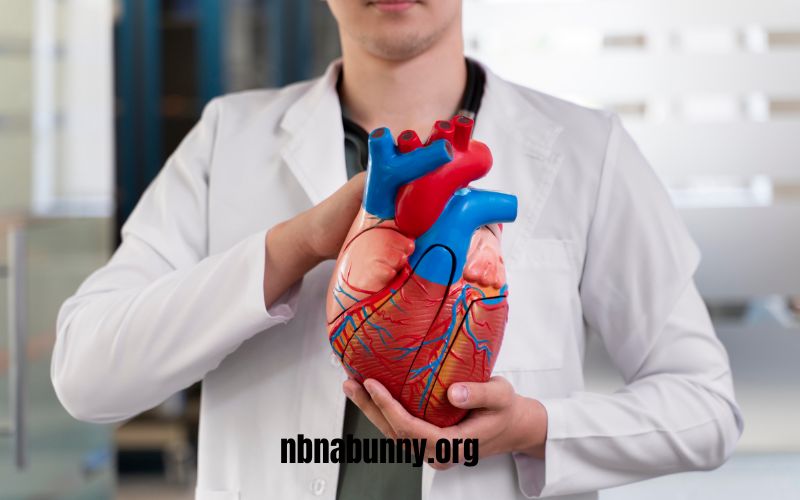The human heart is a complex organ with various structures working together to ensure proper circulation. One such essential component is the coronary sinus, a large vein that plays a critical role in the circulatory system. The coronary sinus is responsible for collecting deoxygenated blood from the heart muscle and delivering it back to the right atrium. Without this function, the heart would struggle to maintain efficiency, leading to various complications.
In this article, we will discuss the structure, functions, and significance of the coro-nary sinus. We will also explore related health conditions and how they can impact overall heart health.
Key Points:
- The coronary sinus is a crucial part of the heart’s venous system, ensuring proper blood flow.
- Blockages or abnormalities in the coro-nary sinus can lead to severe heart complications.
- Understanding its structure and function helps in diagnosing and treating heart-related diseases.
What Is the Coronary Sinus?
The coronary sinus is a large venous structure located at the back of the heart. It functions as the main pathway for deoxygenated blood from the heart muscle to return to the right atrium. This structure is an essential component of the cardiovascular system, ensuring that the heart muscles receive adequate oxygen supply.
The coro-nary sinus forms from the merging of several cardiac veins, including the great cardiac vein, middle cardiac vein, small cardiac vein, and posterior vein of the left ventricle. This merging allows it to serve as a collection chamber for blood before directing it into the right atrium.
Structure of the Coronary Sinus:
The coronary sinus is approximately 2-3 cm in diameter and extends across the back of the heart, opening into the right atrium. It is located in the coronary sulcus, a groove that separates the left atrium and left ventricle. The opening of the coro-nary sinus is controlled by a small valve known as the Thebesian valve, which helps regulate blood flow.
| Feature | Description |
| Location | Back of the heart (coronary sulcus) |
| Function | Collects and drains deoxygenated blood |
| Major Tributaries | Great cardiac vein, middle cardiac vein, small cardiac vein |
| Size | 2-3 cm in diameter |
How Does the Coronary Sinus Function?
The coronary sinus acts as a drainage system for the heart. Blood that has supplied oxygen and nutrients to the heart muscles must return to the circulatory system to be re-oxygenated. The coro-nary sinus collects this blood and empties it into the right atrium, where it eventually gets transported to the lungs for oxygenation.
Steps in Coronary Sinus Blood Flow:
- Deoxygenated blood from heart muscles enters the coronary veins.
- These veins merge into the coro-nary sinus.
- The coro-nary sinus delivers blood to the right atrium.
- From the right atrium, the blood is sent to the lungs for oxygenation.
Without this process, the heart muscles would be unable to function properly, leading to severe cardiovascular diseases.
What Happens If the Coronary Sinus Is Blocked?
A blocked coronary sinus can result in severe heart problems, as it prevents proper blood drainage from the heart muscles. This blockage can be caused by various factors, including congenital heart defects, blood clots, or compression due to tumors.
| Condition | Effect on Coronary Sinus |
| Coro-nary Sinus Thrombosis | Blockage due to a blood clot, leading to impaired circulation |
| Congenital Malformations | Structural defects causing improper drainage |
| External Compression | Tumors or enlarged heart structures pressing against the coro-nary sinus |
Reminder: Coro-nary sinus blockage is a serious medical condition and requires immediate medical intervention._
How Can Coronary Sinus Problems Be Diagnosed?
Doctors use several diagnostic tools to assess the health of the coro-nary sinus. These include imaging tests such as echocardiograms, CT scans, and MRIs.
Common Diagnostic Methods:
- Echocardiogram: Uses sound waves to create images of the heart.
- CT Scan: Provides a detailed cross-sectional image of heart structures.
- MRI: Helps in detecting abnormalities in blood flow.
- Cardiac Catheterization: A more invasive procedure used to analyze blood flow in the coro-nary sinus.
Early detection of coro-nary sinus abnormalities can help in preventing major cardiovascular complications.
Note: If you experience symptoms like shortness of breath, irregular heartbeat, or chest pain, consult a doctor immediately._
Conclusion
The coronary sinus is a vital part of the heart’s venous system, ensuring proper blood circulation. Its role in collecting deoxygenated blood and transporting it to the right atrium is essential for maintaining heart function. Any obstruction or abnormality in the coro-nary sinus can lead to serious health issues, emphasizing the importance of early diagnosis and medical intervention. Understanding the coro-nary sinus helps in preventing cardiovascular diseases and improving overall heart health.
FAQs
1. What Is the Main Function of the Coro-nary Sinus?
The coro-nary sinus collects deoxygenated blood from the heart muscle and delivers it to the right atrium for circulation.
2. Can Coronary Sinus Blockage Be Treated?
Yes, it can be treated using medications, surgical interventions, or minimally invasive procedures, depending on the severity of the blockage.
3. What Are the Symptoms of Coro-nary Sinus Problems?
Common symptoms include chest pain, shortness of breath, irregular heartbeat, and fatigue.
4. How Is Coronary Sinus Diagnosed?
Doctors use imaging techniques like echocardiograms, CT scans, MRIs, and cardiac catheterization to diagnose coronary sinus issues.
5. Is Coro-nary Sinus Related to Any Major Heart Diseases?
Yes, issues with the coronary sinus can be linked to heart conditions such as coronary artery disease, congenital heart defects, and thrombosis.
